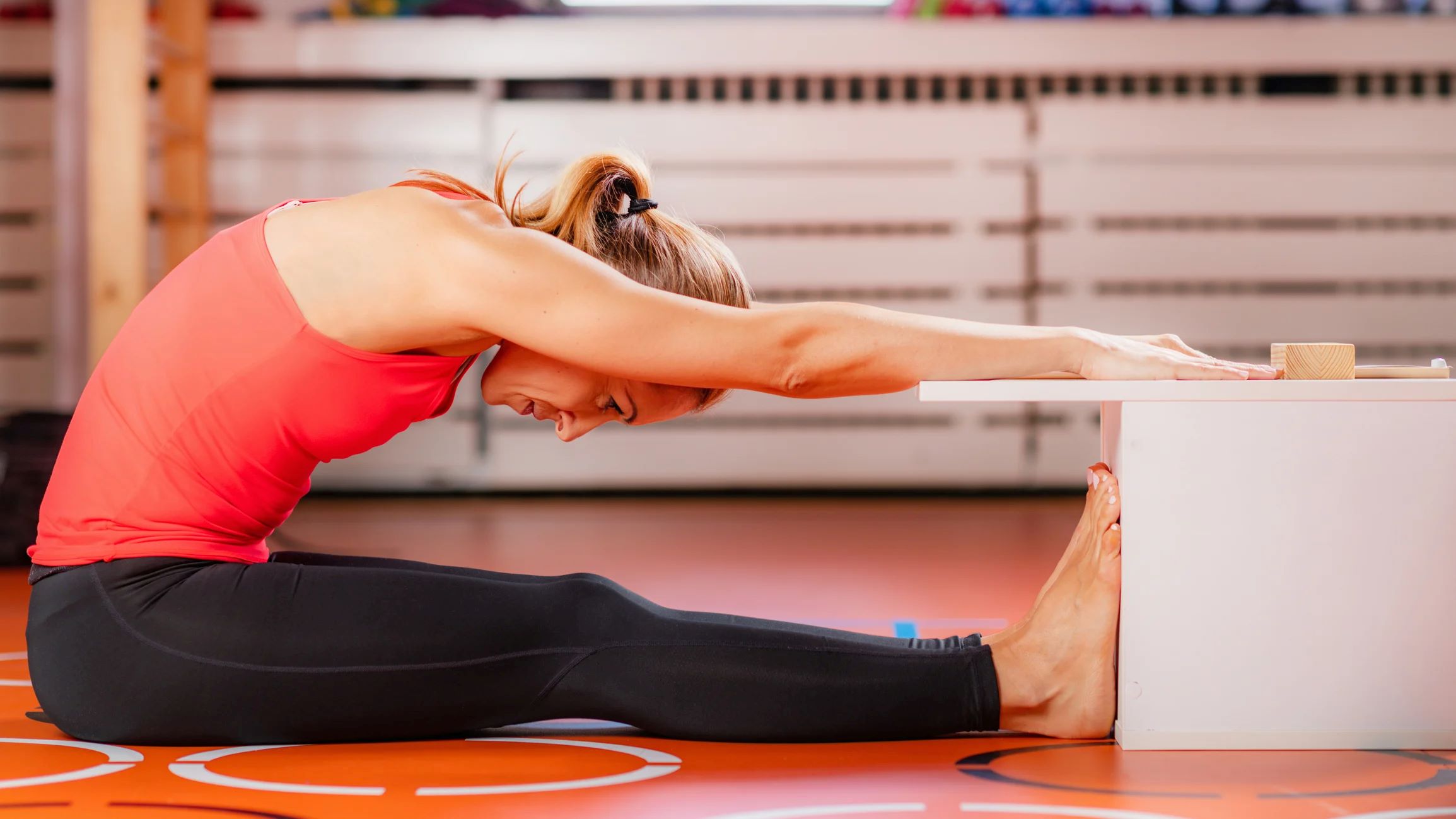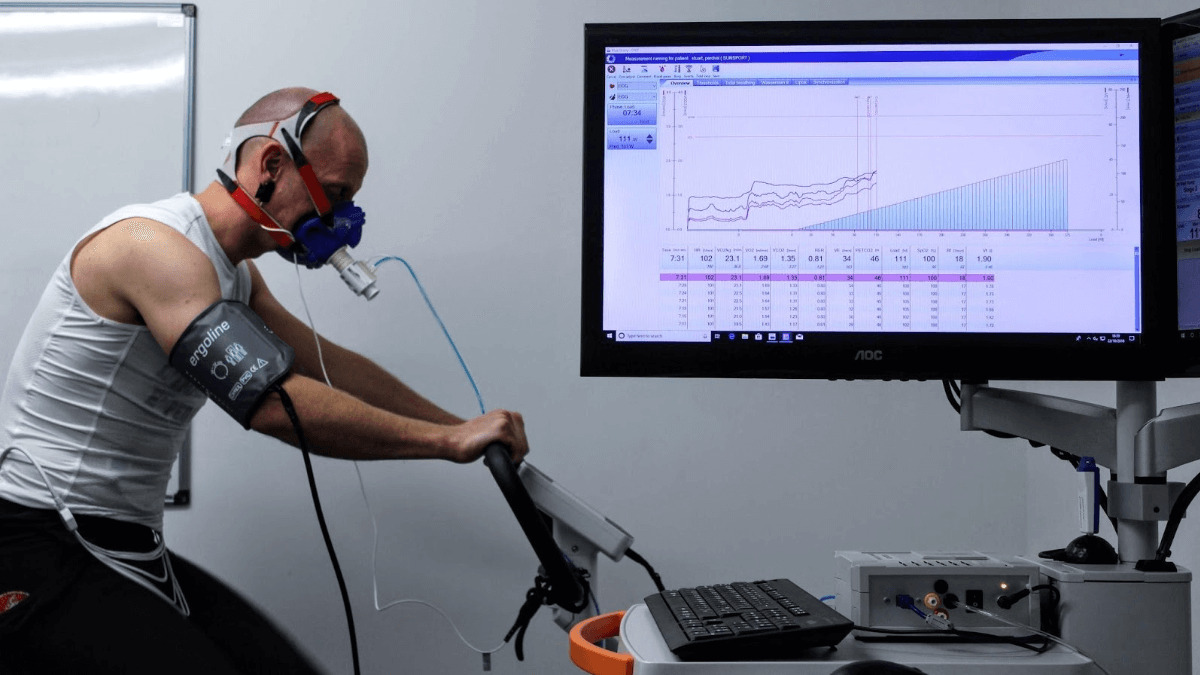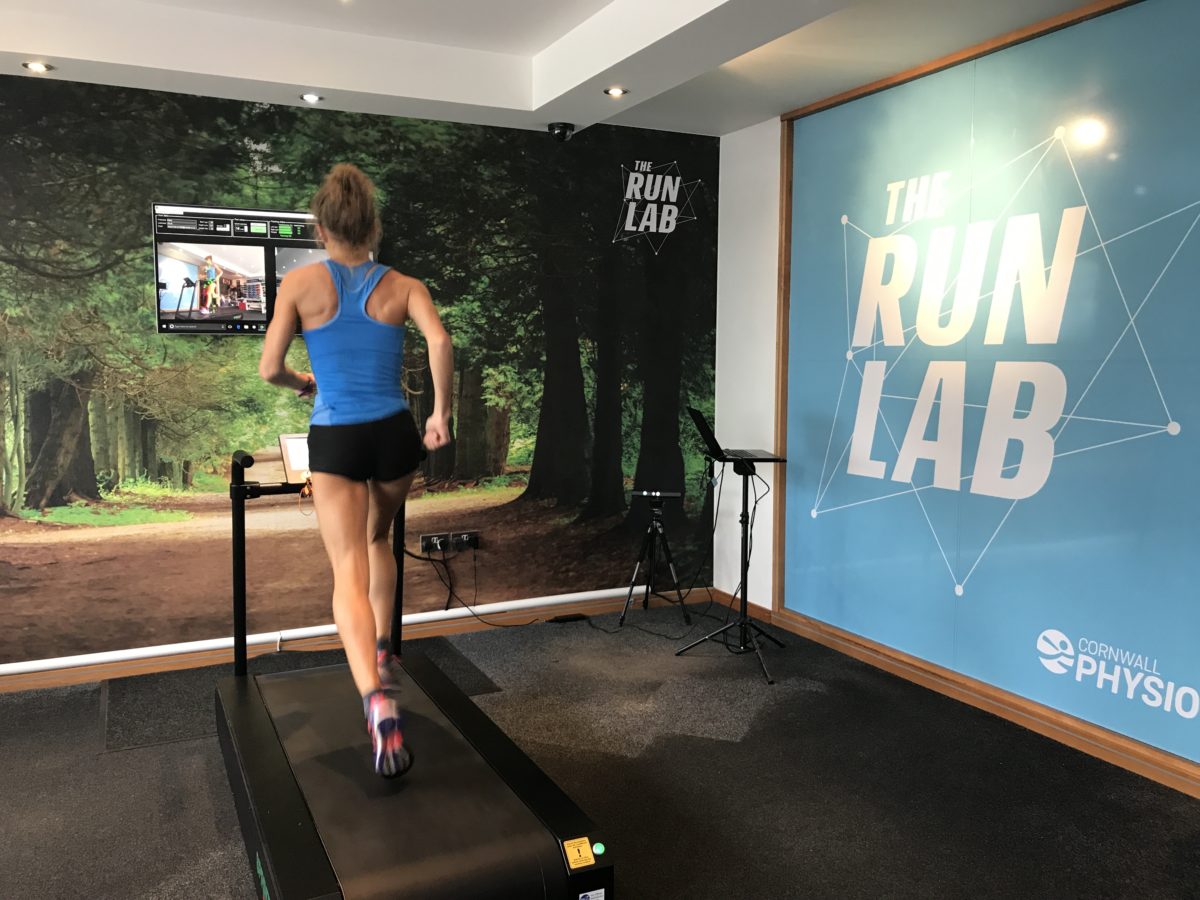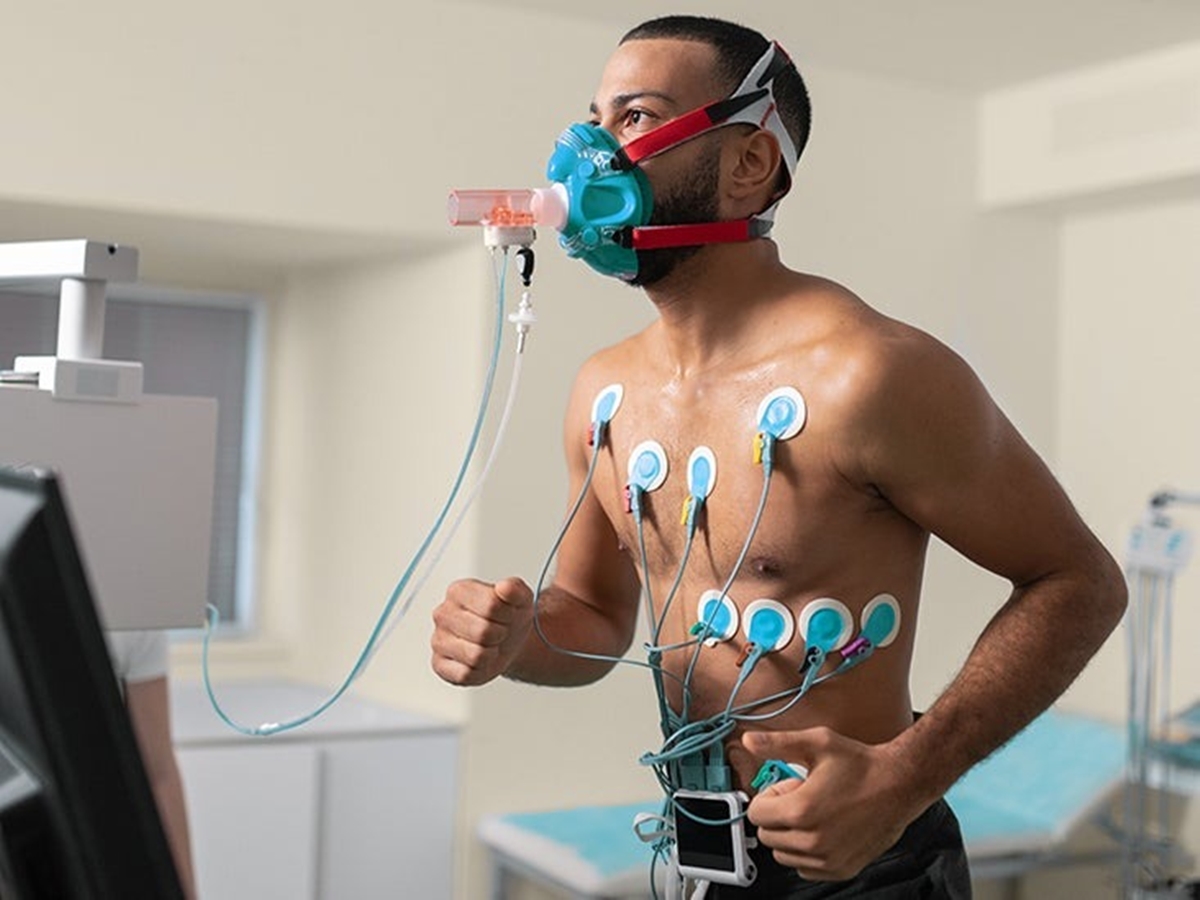Home>Misc>Featured>How To Evaluate Your Athletic Performance
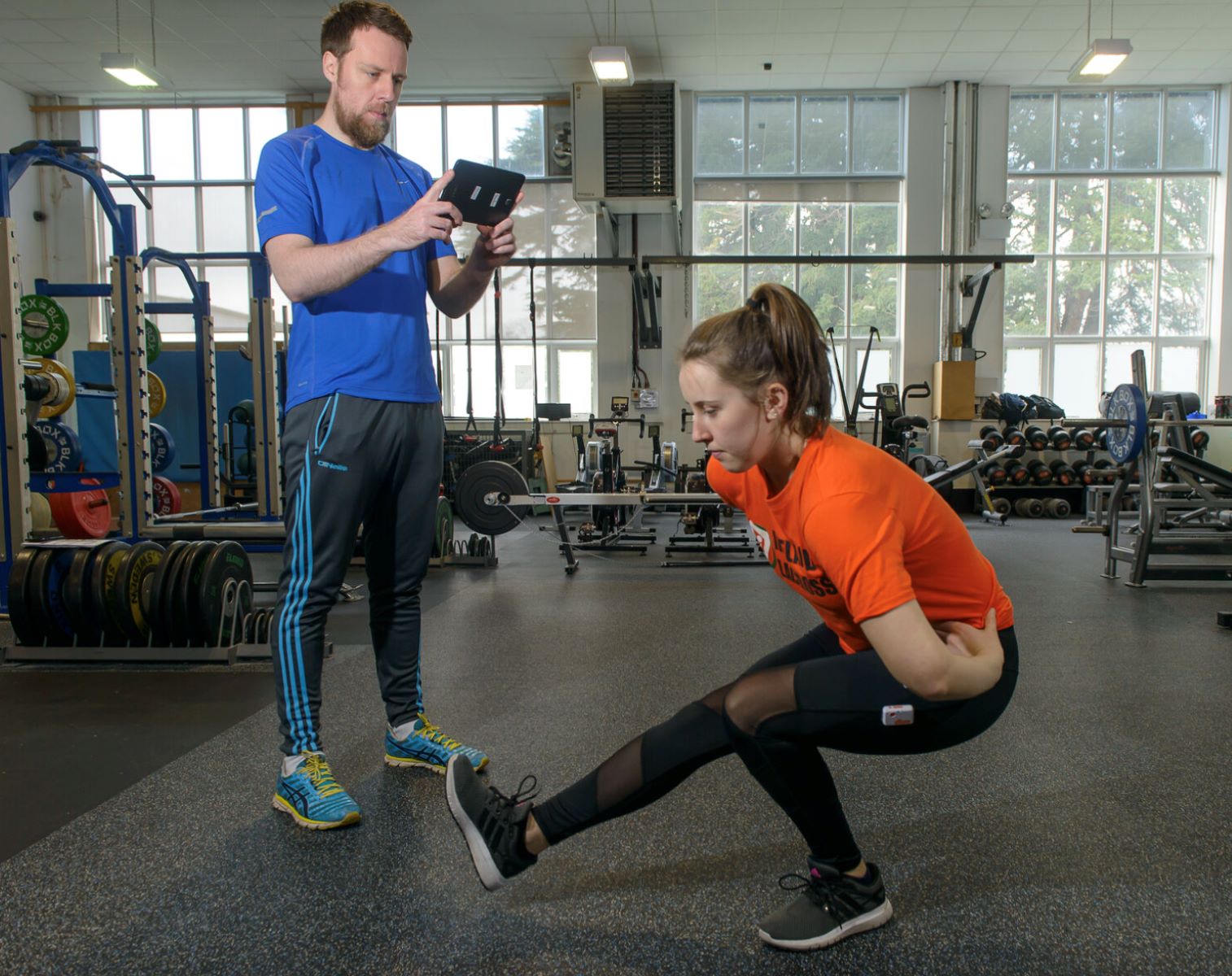

Featured
How To Evaluate Your Athletic Performance
Modified: August 19, 2023
Learn how to evaluate your athletic performance with our featured guide. Enhance your skills and track your progress to reach new heights.
Introduction
Welcome to the exciting and dynamic world of athletic performance evaluation! Whether you are a professional athlete, a dedicated amateur, or simply someone who loves sports and wants to improve their skills, understanding how to evaluate your athletic performance is crucial for personal growth and development.
Evaluating your athletic performance involves a comprehensive analysis of various factors that contribute to your overall abilities and success in your chosen sport. This process goes beyond simply looking at the outcome of a game or competition; it requires a thorough assessment of your skills, techniques, physical fitness, mental resilience, and other key aspects of performance.
By evaluating your performance, you gain valuable insights into your strengths and weaknesses, enabling you to identify areas for improvement and develop a tailored action plan to enhance your capabilities. Evaluating your performance also allows you to track your progress over time and set realistic goals that align with your aspirations.
However, it is important to approach performance evaluation with an open and growth-oriented mindset. While it’s natural to focus on areas that need improvement, it’s equally crucial to acknowledge and celebrate your successes along the way. Remember, evaluating your performance is not about judging yourself harshly; it is about learning, growing, and becoming the best athlete you can be.
This article will guide you through the process of evaluating your athletic performance, providing you with practical tips and strategies to help you assess your abilities effectively. From setting personal goals to analyzing statistics and seeking feedback from coaches, each step in this process will empower you to take control of your development and reach new levels of excellence.
So, whether you’re a sprinter aiming to shave milliseconds off your personal best, a basketball player looking to improve your shooting accuracy, or a soccer enthusiast determined to enhance your passing skills, let’s delve into the world of athletic performance evaluation and uncover the pathway to your optimal performance.
Setting Personal Goals
Setting personal goals is an essential first step in evaluating your athletic performance. Goals provide direction, motivation, and a framework for measuring progress. When setting goals, it’s important to make them specific, measurable, attainable, relevant, and time-bound (SMART). Here’s how you can effectively set personal goals for evaluating your athletic performance:
- Identify your long-term vision: Start by envisioning where you want to be as an athlete in the future. Do you have aspirations of reaching the professional level, or do you simply want to improve your skills and enjoy your sport? Visualize your desired outcome to help shape your goals.
- Break it down into short-term goals: Once you have your long-term vision, break it down into smaller, achievable milestones. These short-term goals will serve as stepping stones towards your ultimate objective. For example, if your long-term goal is to complete a marathon, your short-term goal could be to run a 10K race in a specific time frame.
- Make your goals specific: Avoid setting generic goals like “get better at my sport.” Instead, be specific about what aspect of your performance you want to improve. For instance, if you’re a tennis player, your goal could be to enhance your backhand technique.
- Ensure your goals are measurable: Set goals that you can quantify and track progress. This allows you to evaluate how far you’ve come and adjust your training or strategies accordingly. For example, if you’re a swimmer, your goal could be to reduce your lap time by a certain number of seconds.
- Assess the attainability of your goals: While it’s essential to set ambitious goals, make sure they are within your reach. Consider your current abilities, resources, and time commitment required. Setting unattainable goals can lead to frustration and demotivation. Gradually challenge yourself as you progress.
- Relevance to your overall development: Align your goals with your overall athletic development. Reflect on the areas you need to improve the most and set goals that address those areas directly. Prioritize goals that will have a direct impact on your performance and overall growth as an athlete.
- Set a time frame: Establish a deadline for achieving your goals. Having a timeframe creates a sense of urgency and helps you stay focused. It also allows you to evaluate your progress in a specific timeframe and adjust your strategies if necessary.
Remember, goal-setting is a personal process, and it’s important to create goals that are meaningful to you. Consider documenting your goals and reviewing them periodically to keep yourself accountable and motivated. By setting clear and SMART goals, you lay the foundation for effective evaluation and improvement of your athletic performance.
Tracking Your Progress
Tracking your progress is a vital component of evaluating your athletic performance. By keeping a record of your achievements and monitoring your development over time, you can gain valuable insights into your strengths, weaknesses, and areas for improvement. Here are some effective strategies for tracking your progress:
- Keep a training journal: Maintain a training journal where you can document your workouts, practice sessions, and performance in games or competitions. Include details such as the duration, intensity, and specific drills or exercises you engaged in. Note any notable achievements or challenges you encountered during each training session.
- Utilize technology: Take advantage of the numerous tracking and monitoring tools available today. Use fitness apps, wearable devices, or specialized sports analytics platforms to track metrics like distance, speed, heart rate, and other relevant data. This objective data can provide valuable insights into your progress and help you identify patterns or areas that need improvement.
- Record video footage: In addition to tracking numerical data, consider recording video footage of your practice sessions and competitions. This allows you to visually analyze your technique, form, and overall performance. Reviewing the footage can help you identify any flaws or areas where you excel, enabling you to make adjustments and capitalize on your strengths.
- Measure performance indicators: Determine key performance indicators (KPIs) that are relevant to your sport and goals. These could include metrics such as shooting percentage, completion rate, personal best times, or other benchmarks that align with your specific objectives. Regularly measure and chart these indicators to monitor your progress and identify trends.
- Periodic fitness assessments: Conduct regular fitness assessments to evaluate your physical capabilities. Assessments may include tests for strength, flexibility, endurance, agility, and other components of physical fitness. By tracking your results over time, you can assess improvements and identify areas that require further attention.
- Set milestones: Break down your long-term goals into milestones or checkpoints. These are smaller, specific targets that contribute to your overall objective. Regularly evaluate your progress against these milestones to gauge your performance. Celebrate when you achieve a milestone and use it as motivation to continue pushing forward.
Remember that tracking your progress is not limited to numerical data; it also involves personal observations and subjective assessments. Pay attention to how you feel during training sessions and competitions, your level of confidence, and your mental and emotional state. Understanding the correlation between these factors and your performance can offer valuable insights into your overall progress.
Regularly reviewing and analyzing your progress allows you to identify patterns, uncover strengths and weaknesses, and make informed decisions about your training strategies and areas for improvement. It provides you with a roadmap to evaluate your performance objectively and make the necessary adjustments to achieve your goals.
Assessing Your Skill and Technique
Assessing your skill and technique is a critical aspect of evaluating your athletic performance. Skill and technique are the foundation of success in any sport, and improving them can significantly enhance your overall performance. Here are some effective strategies for assessing your skill and technique:
- Self-assessment: Take the time to objectively assess your skills and techniques. Break down the fundamental components of your sport and evaluate your proficiency in each area. Consider factors such as accuracy, consistency, timing, and control. Identify areas where you excel and areas that need improvement.
- Video analysis: Record yourself while practicing or competing, and carefully analyze the footage. Pay close attention to your body position, timing, movement, and execution of techniques. Compare your performance with that of skilled athletes in your sport to identify areas for improvement.
- Seek input from coaches or trainers: Coaches and trainers offer invaluable expertise and can provide objective feedback on your skill and technique. They can identify flaws, suggest improvements, and provide specific drills or exercises to address areas of weakness. Actively engage in discussions with them and take advantage of their knowledge and experience.
- Participate in skills clinics or workshops: Skills clinics and workshops provide opportunities to refine your techniques under the guidance of experts. These focused training sessions allow you to receive feedback and guidance on specific aspects of your sport. Take advantage of these opportunities to enhance your skills and receive professional evaluation.
- Regular practice and repetition: Skill development requires consistent practice and repetition. Dedicate time to focus on specific techniques, drills, or exercises that target areas in which you want to improve. By practicing regularly, you can refine your skills, develop muscle memory, and enhance your overall technique.
- Observe and learn from skilled athletes: Watch and study athletes who are highly skilled in your sport. Analyze their techniques, body mechanics, and decision-making processes. Identify what makes them successful and try to incorporate those elements into your own approach. Learning from experienced athletes can inspire you and provide insights into areas for improvement.
Keep in mind that assessing your skill and technique should be an ongoing process. As you progress and improve, your assessment criteria may change. Regularly re-assess your skill and technique to track your development and make adjustments to your training program accordingly.
Remember, mastering skill and technique is a journey that requires patience and dedication. Embrace the opportunity to evaluate yourself objectively, embrace feedback, and strive for continuous improvement. By identifying areas for growth and implementing targeted training strategies, you can take your skills and technique to the next level and enhance your overall athletic performance.
Measuring Physical Fitness
Measuring physical fitness is an essential component of evaluating your athletic performance. Physical fitness encompasses various aspects, including strength, endurance, flexibility, speed, and agility. Understanding and assessing your level of physical fitness can help identify areas for improvement and develop a targeted training plan. Here are some effective strategies for measuring your physical fitness:
- Fitness assessments: Conduct standardized fitness assessments to evaluate different components of physical fitness. These assessments may include tests for cardiovascular endurance, muscular strength and endurance, flexibility, and body composition. Use the results to gauge your current fitness level and identify areas that require attention.
- Specific skill tests: Consider tests that are specific to your sport or activity. For example, if you are a sprinter, you can measure your 100-meter dash time or explosive power through vertical jump tests. By focusing on the skills required in your sport, you can tailor your training program accordingly.
- Monitor progress over time: Keep track of your fitness measurements regularly. Test yourself at regular intervals, such as every few weeks or months, to track your progress and identify trends. Seeing improvements in your physical fitness can be motivating and validate the effectiveness of your training efforts.
- Use technology and wearables: Leverage technology and wearable devices that track and monitor your physical activity and fitness metrics. Fitness trackers, heart rate monitors, and GPS devices can provide real-time data on your performance and help you gauge your fitness level during training sessions and competitions.
- Functional assessments: Assess your functional fitness, which refers to the ability to perform everyday physical tasks efficiently and with reduced risk of injury. This can include assessments of balance, agility, coordination, and mobility. Functional fitness assessments help identify areas that require improvement to enhance overall athletic performance.
- Work with a personal trainer: Consider working with a certified personal trainer who specializes in sports performance. They can conduct comprehensive fitness assessments, analyze your results, and create a personalized training plan based on your specific needs and goals. Trainers can provide guidance on exercises and strategies to improve your physical fitness.
Remember that physical fitness is multifaceted, and a holistic approach is necessary for accurate evaluation. Focus on developing a well-rounded fitness routine that includes cardiovascular exercise, strength training, flexibility training, and mobility exercises. By targeting different aspects of physical fitness, you can improve your overall athletic performance.
Regularly assessing your physical fitness allows you to track your progress, set realistic goals, and make informed decisions about your training program. It provides a foundation for enhancing your overall athletic performance and achieving optimal results in your sport or activity.
Evaluating Mental Performance
Evaluating mental performance is a crucial aspect of assessing your athletic performance. Mental resilience, focus, and emotional control play a significant role in achieving success in sports. Understanding and analyzing your mental performance can help identify strengths and weaknesses and enable you to develop strategies for improvement. Here are some effective strategies for evaluating your mental performance:
- Self-reflection: Take time to reflect on your mental approach to training and competition. Assess your ability to stay focused, handle pressure, and maintain a positive mindset. Analyze your reactions to setbacks and challenges and identify areas where you excel and areas that require improvement.
- Journaling: Keep a journal to record your thoughts, emotions, and experiences before, during, and after training sessions and competitions. This can provide valuable insights into your mental state and help you identify patterns or triggers that affect your performance.
- Seek input from mental performance coaches: Work with mental performance coaches or sports psychologists who specialize in optimizing mental performance. These professionals can provide assessments, tools, and techniques to enhance your mental approach. They can also help you develop strategies for improving focus, managing stress, and building mental resilience.
- Use performance questionnaires: Utilize validated performance questionnaires to gain a more objective measure of your mental performance. These questionnaires assess aspects such as motivation, confidence, concentration, and overall mental toughness. Analyzing the results can provide valuable insights into your mental strengths and areas for improvement.
- Set process-oriented goals: Instead of solely focusing on outcome-based goals, set goals that are process-oriented and within your control. For example, instead of aiming to win a specific competition, focus on improving your mental focus and staying composed under pressure. Assess your progress in achieving these goals regularly.
- Review performance under pressure: Evaluate your performance in high-pressure situations. Identify how well you were able to maintain focus, manage stress, and execute your skills. Reflect on your decision-making process and identify any areas where you can improve your mental approach when faced with pressure.
- Use visualization techniques: Practice visualization techniques to mentally rehearse your performance. Visualize successful outcomes, positive emotions, and effective strategies. Assess the impact of visualization on your actual performance and make adjustments as needed.
Remember that mental performance evaluation requires introspection and open-mindedness. Be honest with yourself and embrace areas that need improvement. Developing mental resilience and a strong mindset takes time and practice. Regularly evaluating and refining your mental approach will lead to improved performance and sustained success in your chosen sport or activity.
Analyzing Game or Competition Statistics
Analyzing game or competition statistics is a crucial part of evaluating your athletic performance. Statistics provide objective data that can help you understand your performance, identify strengths and weaknesses, and make informed decisions about your training and strategy. Here are some effective strategies for analyzing game or competition statistics:
- Collect comprehensive data: Gather data on various aspects of your performance, such as points scored, assists, rebounds, completion percentage, or any other relevant statistics in your sport. The more comprehensive your data collection, the better understanding you will have of your performance.
- Compare statistics across games: Look for trends and patterns in your statistics by comparing your performance across different games or competitions. Identify areas where you consistently perform well and areas where you struggle. This analysis can help you pinpoint specific areas for improvement.
- Examine performance against different opponents: Analyze your statistics against different opponents to understand how your performance varies. This can help you identify areas where you excel against certain types of opponents and areas where you may need to adjust your game plan.
- Identify strengths and weaknesses: Analyzing statistics can highlight your strengths and weaknesses as an athlete. Identify the areas in which you excel and where you consistently perform at a high level. Equally, recognize the areas where you may be lacking or need improvement. This assessment allows you to focus your training efforts and capitalize on your strengths.
- Consider situational analysis: Break down your statistics based on different game situations. For example, analyze your performance during clutch moments, in high-pressure situations, or against strong opponents. Evaluating your statistics in different scenarios can help you identify areas where you may need to improve your decision-making or mental resilience.
- Seek feedback from coaches: Discuss your performance statistics with your coaches or trainers. They can provide additional insights and perspectives on your performance. Their expertise and experience can help you interpret the statistics and provide guidance on areas for improvement or adjustment in your training and strategy.
- Track your progress over time: Regularly analyze your statistics to track your progress and evaluate the effectiveness of your training and development. Compare current statistics with those from previous seasons or competitions to assess your growth and identify areas where you have made improvements.
Remember not to solely rely on statistics to evaluate your performance. Statistics should be used in conjunction with other assessment methods, such as self-reflection, feedback, and overall game analysis. Understanding the context behind the statistics will provide a more comprehensive view of your performance and allow for more accurate evaluation.
Analyzing game or competition statistics provides valuable insights into your performance, enabling you to identify areas for improvement and make strategic adjustments. By effectively analyzing statistics, you can enhance your overall athletic performance and strive for continued success in your sport.
Seeking Feedback from Coaches or Trainers
Seeking feedback from coaches or trainers is a valuable step in evaluating your athletic performance. Coaches and trainers have a keen eye for identifying areas of improvement and can provide valuable insights and guidance to help you enhance your skills and reach your full potential. Here are some effective strategies for seeking feedback:
- Develop open communication: Foster a relationship with your coaches or trainers built on open and honest communication. Establish a rapport where you feel comfortable seeking feedback and asking for guidance. This creates a supportive environment for growth and improvement.
- Ask for specific feedback: Instead of generic questions like “How did I do?” or “What can I improve?”, ask for specific feedback on certain aspects of your performance. For example, inquire about your technique, decision-making, positioning, or any other specific areas that you want to focus on.
- Actively listen and observe: When receiving feedback, actively listen and observe the advice and suggestions being given. Remain open-minded and receptive to constructive criticism. Pay attention to the details and ask for clarification if needed.
- Seek both positive and constructive feedback: Don’t focus solely on areas that need improvement. Also, ask for feedback on what you’re doing well. Understand your strengths and celebrate your successes. Positive feedback helps boost confidence and motivation.
- Apply the feedback: Feedback is valuable only if you put it into practice. Take the feedback you receive and incorporate it into your training regimen. Focus on making the necessary adjustments and consistently work on improving the areas identified by your coaches or trainers.
- Consistency in seeking feedback: Seek feedback regularly, not just after a poor performance. Regular feedback allows you to track progress, receive ongoing guidance, and ensure that you are on the right track in your development.
- Observe other athletes: Pay attention to the feedback given to other athletes by your coaches or trainers. This can provide additional insights and help you develop a broader understanding of your sport. Observing feedback given to others can also help you identify areas of improvement in your own performance.
Remember that seeking feedback from coaches or trainers is a collaborative process. It requires humility, a willingness to learn, and a growth mindset. Embrace the feedback you receive as an opportunity for improvement and show your commitment to becoming the best athlete you can be.
Seeking feedback from coaches or trainers allows for objective evaluation of your performance. Their expertise and guidance can help you identify areas of focus, suggest specific drills and exercises, and provide valuable insights to enhance your athletic abilities. By effectively seeking and applying feedback, you can accelerate your progress and achieve your performance goals.
Comparing Performance against Peers
Comparing your performance against your peers is a valuable method of evaluating your athletic performance. It provides a benchmark for measuring your abilities and allows you to gauge where you currently stand in relation to others in your sport or activity. Here are some effective strategies for comparing your performance against your peers:
- Participate in competitions or matches: Compete against your peers in organized competitions or matches to directly compare your performance. Observe how your skills, techniques, and overall performance measure up against others in a competitive setting.
- Analyze head-to-head matchups: Analyze your performance in head-to-head matchups against specific individuals or teams. Pay attention to how you measure up against your direct competitors and identify areas where you excel or where you need improvement.
- Consider rankings or ratings: Take into account rankings or ratings systems that measure the performance of athletes in your sport. Look at where you are placed relative to your peers and use this as a benchmark for evaluating your performance.
- Attend talent identification events: Participate in talent identification events or combine-style trials where you can showcase your skills and abilities alongside other athletes. These events provide an opportunity to compare your performance against others who are also striving to excel in your sport.
- Review match statistics: Analyze match statistics such as points, goals, times, or distances achieved by yourself and your peers. Compare your statistics against those of your peers to gauge your performance in specific areas and identify areas for improvement or further development.
- Seek feedback from coaches: Engage in conversations with your coaches or trainers to gain their perspective on how your performance stacks up against your peers. They have firsthand knowledge of your abilities and can provide valuable insights and guidance on areas where you might need to catch up or where you have a competitive advantage.
- Consider performance in different settings and stages: Evaluate how your performance varies across different settings, such as home games versus away games or regular-season games versus playoffs. Assess whether there are any notable differences in your performance and determine how you compare to your peers in each setting.
When comparing your performance against your peers, it’s important to keep in mind that every athlete is unique. Factors such as age, experience, training programs, and individual strengths and weaknesses can all contribute to variations in performance. Focus on using this comparison as motivation to continuously improve and strive to reach your own personal best.
Comparing your performance against your peers provides valuable insights into your standing in relation to other athletes. It can help you identify areas where you excel, areas where you can improve, and set new performance goals. By understanding your relative performance, you can adjust your training strategies accordingly and work towards achieving your full potential.
Identifying Areas for Improvement
Identifying areas for improvement is a crucial step in evaluating your athletic performance. Recognizing the aspects of your performance that need development allows you to create a targeted plan to enhance your skills and overcome any limitations. Here are some effective strategies for identifying areas for improvement:
- Self-reflection: Take time to reflect on your performance and honestly assess your strengths and weaknesses. Consider your overall technique, decision-making, physical attributes, mental approach, and any other factors relevant to your sport. Recognize areas where you consistently face challenges or where you feel less confident.
- Seek feedback: Engage in open and honest conversations with your coaches, trainers, and teammates. Ask for feedback on areas where they believe you can improve or aspects of your performance that may be holding you back. Their external perspective can shed light on blind spots and provide valuable insights.
- Analyze performance data: Dive into the data collected from games, competitions, or training sessions. Look for patterns or trends that indicate areas where you may be underperforming or lacking in certain skills. Analyze statistics, video footage, and other objective measures to pinpoint areas for improvement.
- Compare against top performers: Study and compare your performance against top performers or athletes who excel in your sport. Identify the gaps between your abilities and theirs. Analyzing their techniques, strategies, and approaches can help you identify areas where you can improve and learn from their success.
- Consider feedback from opponents: Seek feedback from opponents or competitors who have faced you in games or competitions. They may offer insights into your strengths and weaknesses from their perspective. Analyzing their observations and experiences can provide valuable information for improvement.
- Focus on specific skills or techniques: Assess individual skills or techniques that are important for your sport. Evaluate the proficiency and effectiveness of each skill. Determine areas where you may be lacking or where refinement could lead to significant improvements in your overall performance.
- Assess physical fitness levels: Evaluate your physical fitness in terms of strength, endurance, flexibility, speed, and agility. Identify areas where you may need to improve your conditioning in order to enhance your overall athletic performance and prevent any physical limitations.
Remember that identifying areas for improvement is a positive and proactive step towards growth and development as an athlete. Embrace constructive feedback and view it as an opportunity to learn and grow. Be patient with yourself and understand that improvement takes time and consistent effort.
Once you have identified the areas for improvement, prioritize them based on their impact on your overall performance and set achievable goals to address each area. Break down each goal into actionable steps and create a plan to systematically work on enhancing those aspects of your performance.
By identifying the areas in need of improvement and implementing targeted strategies, you can make significant progress in enhancing your skills, techniques, physical fitness, and overall athletic performance.
Creating an Action Plan
Creating an action plan is a critical step in evaluating your athletic performance. It involves developing a roadmap that outlines the specific steps and strategies you will take to address the areas for improvement identified in your evaluation. Here are some effective strategies for creating an action plan:
- Set clear and specific goals: Based on the areas for improvement identified, set clear and specific goals that align with your overall objectives. Make sure your goals are measurable, attainable, and time-bound. Break down larger goals into smaller, actionable steps.
- Identify resources and support: Determine the resources and support you will need to achieve your goals. This could include access to training facilities, specialized equipment, coaching or training programs, or additional support from teammates, friends, or family.
- Create a training schedule: Develop a training schedule that outlines the frequency, duration, and specific activities you will engage in to improve your performance. Incorporate a balanced mix of skill-focused training, physical fitness workouts, and mental resilience exercises.
- Seek expert guidance: Consult with coaches, trainers, or sports professionals who can provide expert guidance and tailor your training program to your specific needs. They can help you develop a detailed plan that targets the areas you want to improve and ensures that you are progressing effectively.
- Include diverse training methods: Incorporate a variety of training methods and drills to avoid monotony and maximize your improvement. This can include individual drills, team-based activities, simulated scenarios, strength and conditioning exercises, and mental training techniques.
- Monitor progress and make adjustments: Regularly monitor your progress by tracking key metrics, assessing your performance, and analyzing your results against your goals. If you are not making the desired progress, make adjustments to your action plan. Seek guidance from experts to help fine-tune your approach.
- Maintain a positive mindset: Cultivate a positive and growth-oriented mindset throughout your journey. Embrace challenges as opportunities for growth and view setbacks as learning experiences. Stay motivated, stay focused, and believe in your ability to continually improve.
- Seek ongoing feedback: Continue seeking feedback from coaches, trainers, and teammates throughout your training and development process. Regularly evaluate your performance and adjust your action plan accordingly. Feedback will provide valuable insights and ensure that you stay on track towards your goals.
Remember that an action plan is a flexible guide that can be modified as you progress. Be open to refining your plan based on new insights or changing circumstances. Regularly reassess your goals and make adjustments where necessary to ensure that your action plan remains relevant and effective.
Creating an action plan sets the foundation for focused training and development. It helps you stay organized, motivated, and accountable as you strive to improve your athletic performance. By following your action plan diligently, you can make steady progress and achieve your desired level of excellence in your sport or activity.
Conclusion
Evaluating your athletic performance is a crucial step on your journey to becoming the best athlete you can be. By systematically assessing various aspects of your performance, you can gain valuable insights into your strengths, weaknesses, and areas for improvement. This evaluation process allows you to develop a targeted action plan that can enhance your skills, techniques, physical fitness, mental resilience, and overall performance.
Setting personal goals is the initial step in evaluating your performance. By creating specific, measurable, attainable, relevant, and time-bound (SMART) goals, you establish a clear direction for your development and growth. Tracking your progress through training journals, technology, and video analysis allows you to monitor advancements and make data-driven decisions.
Assessing your skill and technique, as well as your physical fitness, provides insights into specific areas where you can focus your training efforts. Evaluating your mental performance enables you to develop strategies to enhance focus, resilience, and overall mindset. Additionally, analyzing game or competition statistics and comparing your performance against peers offers valuable benchmarks for improvement.
Seeking feedback from coaches or trainers, along with self-reflection, helps you gain external perspectives and identify areas for improvement that you may not have noticed on your own. Consequently, creating an action plan based on your evaluation is essential for structuring your training regimen and ensuring progress towards your goals.
Remember, the journey of evaluating and improving your athletic performance requires dedication, hard work, and a growth-oriented mindset. Embrace the process of self-evaluation and use the feedback and insights gained to propel your athletic development forward.
As you continue on your athletic journey, keep in mind that evaluating your performance is not a one-time endeavor. It is an ongoing process that requires consistent assessment, adjustments, and a commitment to continuous improvement. By refining and incorporating the strategies outlined in this article, you will be well on your way to unlocking your full potential and achieving athletic excellence.
